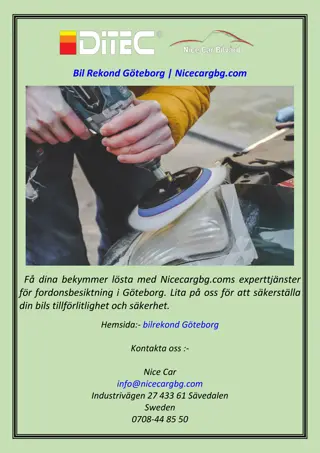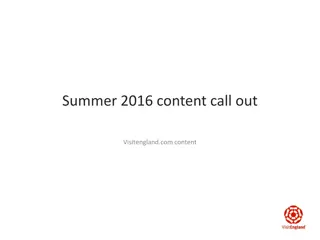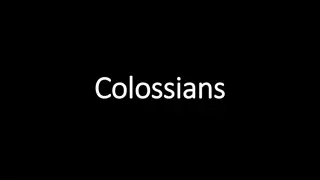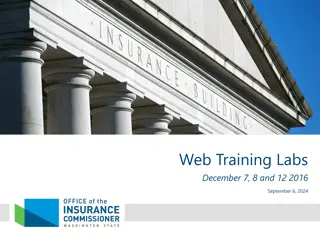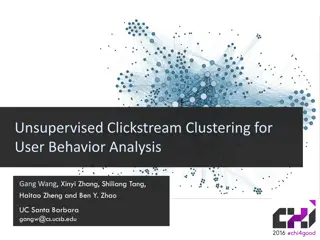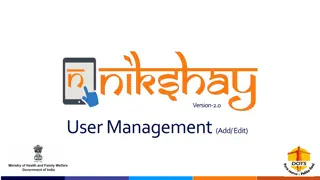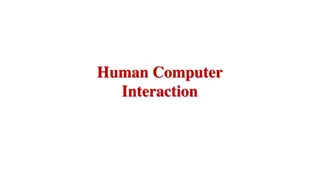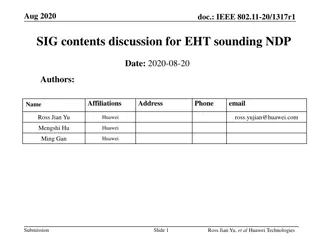Putting Content First for Effective User Experiences
Content is king in creating meaningful user experiences. Emphasizing content over design and incorporating change management can lead to smoother processes and better user satisfaction. Experts highlight the importance of focusing on content before design, debunking assumptions about content's role, and establishing proper digital governance. The key takeaway is that content-driven digital evolution can drive success in projects and customer satisfaction.
Download Presentation

Please find below an Image/Link to download the presentation.
The content on the website is provided AS IS for your information and personal use only. It may not be sold, licensed, or shared on other websites without obtaining consent from the author.If you encounter any issues during the download, it is possible that the publisher has removed the file from their server.
You are allowed to download the files provided on this website for personal or commercial use, subject to the condition that they are used lawfully. All files are the property of their respective owners.
The content on the website is provided AS IS for your information and personal use only. It may not be sold, licensed, or shared on other websites without obtaining consent from the author.
E N D
Presentation Transcript
Content Really IS King Putting content first to create meaningful & effective user experiences
Digital Evolution = Change Fine Print: Change is hard for most people
Our processes are broken, we are buried in information, and it is killing our ability to satisfy our customers. John Mancini, President, CEO Association of Image & Information Management (AIIM)
A well-planned (content first) digital evolution can mean: Less backtracking and cost overruns Better user experience Smoother internal processes
Build change management into your project plan. Paula Land, founder and principal of Strategic Content, author of Content Audits and Inventories: A Handbook
Assumption #1 Content is just a design element
Content precedes design. Design in the absence of content is not design. It is decoration. Jeffrey Zeldman, dubbed King of Web Standards by Business Week.
The fight between form and function is false. There is knowledge and the mechanisms needed to share knowledge. Lisa Welchman, Managing Chaos: Digital Governance by Design
Assumption #2 Content is just data.
A new digital product (website, app, etc.) is NOT an IT project. Don t let the techies drive the bus. Rahel Anne Bailey, co-author of Content Strategy: Connecting the dots between business, brand and benefits
Assumption #3 Content people are creative types.
Content people are big picture people and so is your CEO/ED/president.
Assumption #4 It s JUST content.
Content is the single most- used way of understanding an organization s products or services, stories, and brand. Scott Abel, The Content Wrangler
Content is an asset. It is a product to be managed.
Content is business critical.
Truth #1 Content is messy.
We live in the marvellous, messy middle.
Truth #2 Content is overwhelming.
What can I say? Embrace the overwhelm.
Truth #3 Content is everything, and exists in every medium.
To be truly content first, be digital first or at least consider digital in your overall communications strategy.
How to Become Content First
Content first starts with content strategy. Content is the raw material we are shaping into an experience. Linn Vizard, usabilitymatters.com
Answer these questions: O Why = Project Goals, Communications Goals O Who = Audience + Content owners O What = Key Messages, Content Inventory O Where = Information Architecture (Sitemap) O When = Governance O How = Design, Delivery, Technology
Ask Why?, What? and Who? before How?
The more decisions you can make once your content strategy is in place, the better the final product will be.
LOREM IPSUM Design with real content.
Choose a Content Management System based on your content needs (and therefore business needs).
Who needs to unite on content? O Business stakeholders O UX O IA O Technologists (including content types and how content interacts as part of a user experience) Content strategists are key to keeping content discussions live and front of mind.
Many failed projects result from a mismatch between business content needs and the unchallenged constraints and limitations of a content management system. This is wrong, costly and unsustainable. Cleve Gibbon, CTO at Cognifide
Well-defined systems and processes = High standards and good governance.
So you want to be a CCO or advocate for one in your organization.
Know your organization and ALL its business processes.
Know your potential audiences
Where is your organization on this scale? It s just content Content is king!
Be the bridge between executives and audience
Offer continuity between business goals and business outputs.
Youre right, it s not easy. But the outcome will be worth it.
Content is a wave of constant change. Wanna be a CCO? Ride it.

 undefined
undefined





 undefined
undefined











